Burrowed in mud at the bottom of a pond are turtles waiting out winter. Come spring, they will be basking on logs and rocks soaking in the sun’s rays. Since the painted turtle is the only native turtle in Idaho, it is easy to identify. But in other regions of the country, more than one turtle species exists.
When identifying a turtle, the shell is often the defining characteristic. Turtle shells are commonly brown, black, or olive green but can have red, orange, yellow or grey markings that help in identification.
The shape of a turtle shell reveals a turtle’s lifestyle. Aquatic turtles, such as the painted turtle, have flatter, streamlined shells that let them glide through the water easier. Land dwelling turtles typically have high-domed shells to protect them from the jaws of their predators.
Some turtles can pull into their shells to evade predators, but unlike cartoons, they cannot remove themselves from their shell. A turtle’s shell isn’t like a snail’s shell that is completely on the outside, instead a turtle’s shell is part of its skeleton, much like people.
The shell is composed of two sections: the carapace (the top half) and the plastron (the bottom half). A bony bridge fastens the two sections together. Both the carapace and the plastron are made of bone and scutes. The carapace consists of 50 to 60 rib and back bones while the plastron is a fusion of the clavicle and rib bones. The bones are flattened into plates that fuse together.
Since the bone is a living material containing a blood and nerve supply, it is protected by scutes. The scutes are overlapping pieces of keratin, the same material in other reptile scales and our fingernails. Even though the scutes provide protection, a turtle can still feel pain and pressure through its shell.
Turtles are capable of repairing damage to their shell if it isn’t too extensive–like being run over by a car. The blood vessels in the bone provide protein and calcium for the bone to regrow and reshape itself.
Most turtles have approximately 38 scutes protecting the carapace and 12 to 14 scutes on the plastron. A turtle has the same number of scutes throughout its life. Since the shell is part of the turtle’s skeleton, it grows with the turtle. Just as a baby’s skull plates are not fused at birth, a baby turtle’s bone plates don’t fuse together until it has grown to its maximum size.
As the bone plates grow, the scutes also have to grow to cover the bone. Some turtles, such as wood turtles, enlarge the diameter of the scutes by adding layers of keratin which creates “growth rings”.
Unlike trees, the growth rings are not completely reliable for determining age because more than one ring can grow a year and older rings can be worn down and be hard to distinguish.
Other turtles shed the old, smaller scutes as they are replaced by larger ones from underneath. The old scutes often fall off while basking in the sun on a warm summer day because the sun’s warmth dries out the old scutes while also warming the cold-blooded turtle.

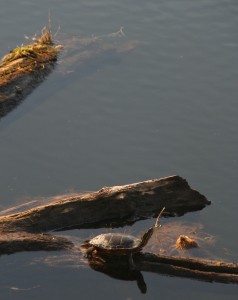
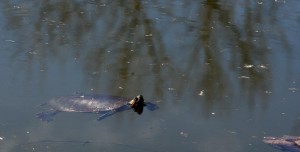
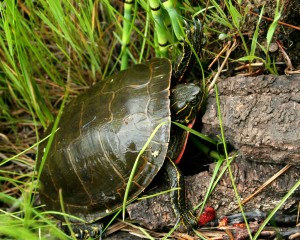
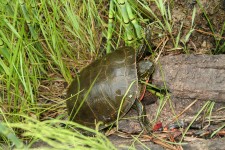

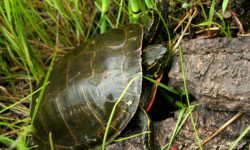
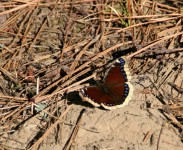
Where do u find these turtles